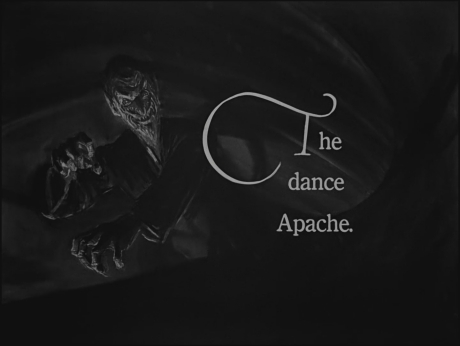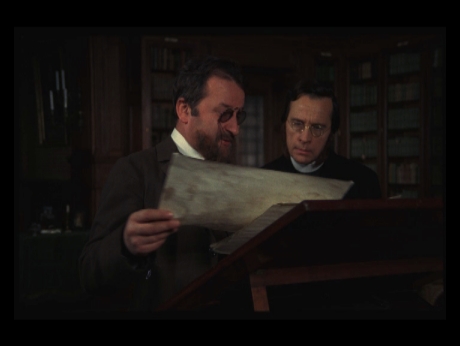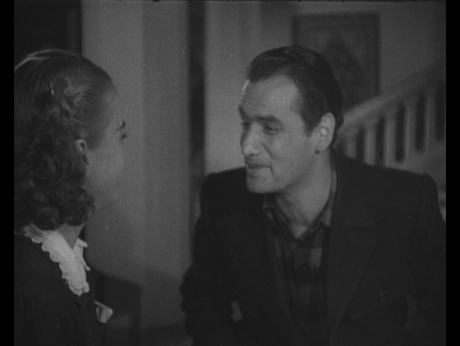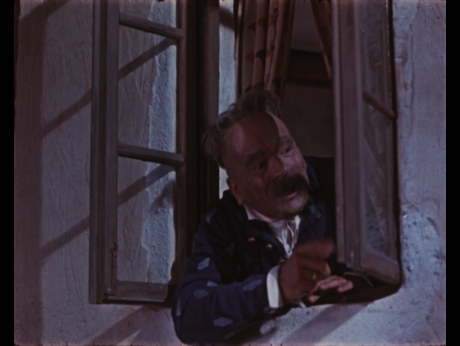
 opis filmu
opis filmu
The drama revolves around a love triangle. Pola is from a small village. There she falls in love in Dmitri. After an argument with her parents, she decides to run away from the village. She gets her boyfriend drunk and takes his money. Soon after that, thanks in part to her luck, she becomes a famous dancer. She meets Alexis, a rich entrepreneur, who promises to marry her. Pola is unaware that Alexis has a wife. She also fails to realize that the vengeful Dmitri has appeared in town.

 treść
treść
Pola Bashnikeff lives with her parents in a little village near the Polish-Russian border. Ever since turning 16, she started getting into trouble. She enjoys male company, and she often does not return home at night. Her parents wait uselessly for her return. Pola spends the time by the lake with her friends and a boy that she has fallen in love with - Dmitri. Soon they come back home together. Pola sneaks to her bed through the window. Her father discovers that she was not sleeping at home and starts beating her. She runs away to Dmitri and asks him for help. He steals money for her and suggests that she stay in a hotel, which is run by his friends. In the hotel, Pola realizes that Dmitri would like to keep her for himself. She gets him drunk and takes his money away. The boy soon wakes up and finds a note in which Pola tells him goodbye and promises to return the money she has taken. The whole situation makes Dmitri furious. Soon after this Pola starts looking for a work. Meanwhile, Dmitri decides to find her. Pola gets a job in a dressmakers. One of her colleagues invites her to the theater. Pola starts learning how to dance because she wants to become an artist. The next day a rich entrepreneur receives a letter from his friend who wants to present Pola to him. The dancer has already become very successful in the Cabaret Ardent. She does not know that Dmitri is following her and that he has been hired as a waiter at the Cafe de Paris. When Alexis sees Pola on the stage, he falls in love even though he already has wife and daughter. Pola also falls for him. Alexis wants to tell his wife about his romance, but he has no courage. During his next meeting with his lover, Pola pushes him to marry her. He promises that he will propose to her soon. The girl does not believe him. Meanwhile, Sonia - Alexis' wife - waits for his return. Finally, when the man arrives home, he announces to his wife that he wants a divorce because he loves someone else. Sonia is distraught, but she lets him go. Soon after, Alexis sees Pola and tells her that they can finally be together. They decide to celebrate in Cafe de Paris. In the cafe, Pola meets Dmitri, but he does not recognize her. The girl asks Alexis to play the piano, while she leaves the money and a note to Dmitri on the table. Meanwhile, Sonia moves in with her mother. When Alexis and Pola leave the cafe, Dmitri finds the note with money. After returning home, Pola starts to suspect that Alexis could be married. During the breakfast, she meets with the head of the theater who has a contract for her. She does not want to sign it because she plans to marry Alexis. The headmaster tells Pola that Alexis is already married. She decides to find it out with the help of her friend. Just as she is talking to this friend, Alexis enters the room. She asks him to leave and promise that they will see each other later. However, she does not appear. Instead, she sends the letter in which she tells him that she knows about his family and she does not want to know him. At the same time, Sonia gets emotionally exhausted and falls sick. With a broken heart, Alexis decides to go back to his wife. He writes her a letter full of apologies. Meanwhile, Dmitri plans the revenge on Pola. Soon after that Sonia's mother receives the letter from Alexis. Its content is so shocking that Sonia dies. Dmitri meets Pola in front of the theater and shoots her with a gun. The girl dies soon after this. Alexis finds out that his wife is dead.

 komentarz
komentarz

 głosy prasy
głosy prasy
For a few days now the Palace de Glace has been showing the utterly realistic drama "The Polish Dancer". In this picture, we will find familiar figures from the streets of Warsaw. We observe their lifestyle and witness their big family tragedy. We find in it logically developed action, skilfully done intrigue and a very impressive conclusion. The artistic and technical side is beyond reproach thanks to the creative talents of the Polish cinematic assocation Sfinks. Pola Negri as a female beast gave us the creation adequate to her great mime talent. Other roles were greatly performed by Dulębianka, Pawłowski, and Kuncewicz. "The Polish Dancer" in Palais de Glace is to expected to be a continuing further success.
"Z kinematografów", "Gazeta Poranna Dwa Grosze”, 1917, vol. 10, p. 2.
"Palais de Glace" is still screening "The Polish Dancer" with Pola Negri in the leading role. The unusual attraction of the show is the singing performance of Mme Józefina Warszawska who charms the listeners with her great artistic impressions.
"Teatr i Muzyka", "Gazeta Poranna Dwa Grosze”, 1917, vol. 16, p. 4.
Yesterday Palace de Glace premiered an original picture entitled "The Polish Dancer". The dancer is a female beast that runs away from a modest family home. She meets with the wide world where rich people enjoy life. Thanks to her natural talent for choreography and most of all her natural beauty, she breaks apart a loving couple bringing about the death of the wife. After leaving her victim she dies at the hands of her first rejected lover. Everything is mixed with plenty of discreet episodes from which the most effective ones feature the dancing Pola Negri and Mia-Mara. The content restricted in a silent film is quite expressive in its melodramatic mood. Great and lively acting recompensates this restriction not only highlighting the already mentioned artists but also Mme Maria Dulęba and MM. Kuncewicz, Pawłowski, Dyliński and much more.
"Z kinematografów", "Przegląd Poranny”, 1917, vol. 6, p. 4
"The Polish Dancer", featuring Pola Negri, is the feature of Keeney’s tomorrow. This production was made in a Russian setting and has its beginning in the countryside where wild youth plays untrammeled. It concerns a girl who left her peasant home and became a great dancer in the city.
"Keeney's Theatre", "Brooklyn Daily Eagle”, November 20, 1921, p. 42.
"The Polish Dancer", starring Pola Negri and State Righted by Jesse Levinson, was given its premiere showing in the South at Loew's Strand Theatre, in Washington, D. C., where it played to capacity business.
"Polish Dancer" Opens at Capital, In the Independent Field, Moving Picture World, January 21, 1922.
Jesse Levinson, who is State righting "The Polish Dancer" a Pola Negri special, returned to New York from successful trip through the eastern territory. He closed many deals.
"Gossip of the trade", "Moving Picture World", December 31, 1921
Pola Negri Will Star in Picture Bought from J.A.Levinson for Northern New Jersey. Jans Film Service, Inc., has just made arrangements to release Pola Negri in her latest success, "The Polish Dancer", in the territory in northern New Jersey. J.A. Levinson of 1600 Broadway is distributing the feature on a State rights basis. This picture is said to show Pola Negri to great advantage and completely demonstrates the marvelous versatility of this emotional screen actress. The release date for "The Polish Dancer" will be announced shortly.
Jans to Release "The Polish Dancer", Exhibitors Trade Review, November 5, 1921

 ciekawostki
ciekawostki
Even though in the movie, the name of the main character, the theater artist, is Pola Bashnikeff, above her bed we see ribbons praising the talent of Pola ... Negri.
Just after shooting wrapped for "The Polish Dancer" Pola Negri broke up the agreement with Sfinks and decided to join a German production company. The owner of the Sfinks sued Pola. The report of the trial in "Przegląd Poranny" from 1 February 1917 said: The mentioned case in an earlier number of "Przegl. Wiecz." is shaping in the following way: Mme Pola Negri, the dancer, had signed the contract on 1 January 1916 with the First Cinematographic Atelier in Warsaw Sfinks, signing the 2-year agreement to perform in 6 movies during one year and receiving the salary of 3000 roubles with a restriction to not appear in the productions of any other Atelier. After one year of the agreement, mother of Pola Negri - Mme Eleonora Chałupiec - informed the Warsaw Atelier that her daughter is a minor therefore the agreement is not valid and the terms and conditions of the agreement are unfair to Pola Negri. Against such a declaration, the attorney for the atelier A. Kroński sued Pola Negri demanding the court consider the agreement from the 1 January 1916 as a valid one. Neglecting the appointed date of the case, taking place on 30 January, Pola Negri signed a contract with the Saturn Atelier based in Berlin, by the virtue of paying annually Pola Negri 20 000 German marks and moving her to Berlin with her mother. Straight away, attorney Kroński applied to the court with a further application, demanding they ban Pola Negri from performing in any atelier under the penalty payment. The case was on the table of the 5th Department of District Court led by the judge Bauer. The attorney for the defendant asked to dismiss the action and additional request. The contract with the minor in attorney's mind invalidates it, especially given the unfair conditions it stipulates. According to this contract, Pola Negri was to receive only 3000 roubles including 200 roubles for additional toiletries, when in real life she was worth much more. Many a time Pola had to attend parties causing the destruction of her expensive dresses. The mother of Pola Negri knew nothing about this unfair agreement and she could swear by it: Pola Negri was always free and she was not confining her actions. To confirm all the mentioned circumstances the attorney of the defendant referred to a number of witnesses. In response, the lawyer of Warsaw Atelier explains that according to 1808 Article of the Polish Civil Codee, the artist cannot invoke her minority and the case that Pola Negri is currently receiving 20 000 Greman marks is not proving her value and that the salary she is receiving here is unfair. Regardless of her salary Pola Negri was receiving special costumes from the Atelier, therefore when she was socializing she was wearing these dresses. She was living with her mother since forever which is proven as she was receiving notices to the same flat, at the moment she has not gone with Pola Negri to Berlin therefore supposedly she does not know what her daughter is doing there. Thus the assurance of her attorney about her wilfulness is strongly exaggerated. That "Saturn" learned about the existence of Pola Negri is thanks to the Atelier in Warsaw that paid for the advertisement worth thousand roubles; this should motivate her to fulfill the conditions of the agreement and to wait for the finishing date. District Court decided to accept the agreement from 1 January 1916 for the valid one and to forbid Pola Negri from performing in any cinematographic atelier paying the penalty in favor of State Treasury of five thousand German marks for each picture. The judgment is to restrict immediately the feasibility of her performing outside of Poland.



















Femme fatale. Gentlemen - be cautious! She brings the demolition of hearts and destruction. All the movies with Pola Negri were made in accordance with this scheme. And so is her role in "The Polish Dancer" released just after "Arabella" (both movies were made in 1917). It is unknown who exactly the director of the movie is, supposedly it is Jan Pawłowski. The pictures were shot by Witalis Korsak Galewski. He is responsible for plenty connections to other movies with starring Pola Negri. The surviving copy of "The Polish Dancer" was found after the war in the United States. How funny and naive is the movie while at the same time it demonstrates the acting skills of the future Hollywood star. Originally the movie was to be entitled "Kochanka Apasza", but it had to be changed as another movie with Maria Vidal in a leading role had a similar title. In general, it was the time when bandits were in fashion. They conquered the screen with a femme fatal by their side. The main character in the movie, the dancer, is a peasant girl that is in love with a bandit. Beautiful and possessive. Her cleverness is embellished with beauty and sexiness. These three factors dictate the journey of her entire life. From a small village, where her adulthood begun, she wanders into a town. Shortly after she also leaves the bandit. She is hired as a milliner. Later, she gets involved as a cabaret dancer. (Here Pola Negri got a chance to present her dancing skills). This lusty and passionate dance got her admirers of whom she chose the richest one. This excellent husband and admired father falls in love with the dancer and leaves his wife and child for the popular star of cabaret. The unfaithful husband notices his mistake and decides to go back to his wife. It is too late. His wife dies out of grief and longing. The main character, wounded to death, dies at the hands of the bandit lover who follows the unfaithful woman. It is worth to mentioning that Maria Dulęba, who played the wife, was described by the press as: "great mime artist with a performance full of sentiment and simplicity touches the viewers"
Wiesława Czapińska, "Pola Negri polska królowa Hollywood", Wyd. Philip Wilson, 1996, p. 37-38
The golden age of the genre was at the time of the First World War, after the appearance of the first star of Polish cinema. Pola Negri (born Apolonia Chałupiec, 1897-1987) gifted with a unique movie talent - beautiful, with a temperament, incredibly photogenic and with a ballet background - shortly conquered the nations affections, gaining the name of 'Polish Asty Nielsen'. Before she left the country in 1917 and acquired in Germany and United States the position of a great silent film star, she appeared in eight Sfinks productions. She was playing just one type of woman – the femme fatale - who was destroying the happiness of her lovers. In "Niewolnica Zmysłów", directed by Jan Pawłowski (1914), where she debuted, and in "The Polish Dancer" (1917 - the only movie that has survived) she dies in a finale, murdered by jealous bandit - her past lover. In "Żona" (1915) she takes her own life after being cheated by her husband. A similar scheme was repeated in a movie series "Tajemnice Warszawy" where she finished the Polish part of her career. It carrer soon took off after this as the German director Ernst Lubitsch provided her vast repertoire.
Encyklopedia kultury polskiej XX wieku. Film, kinematografia, ed. E. Zajicek, Instytut Kultury, 1994, p. 118-119.